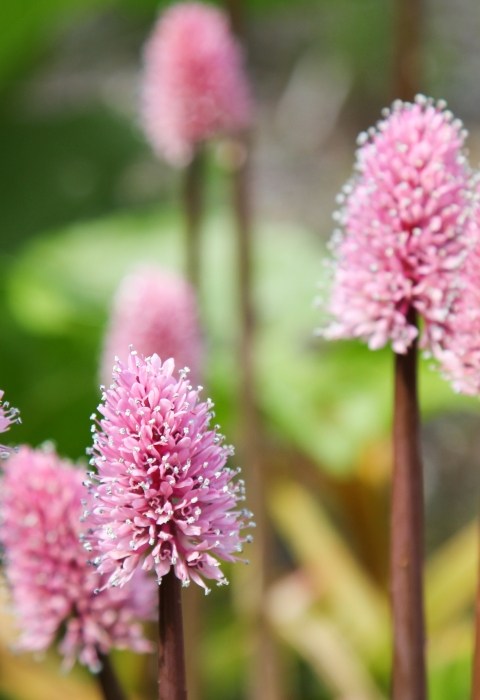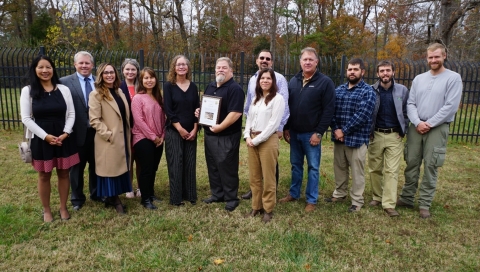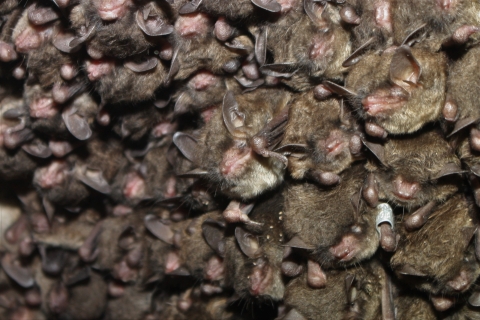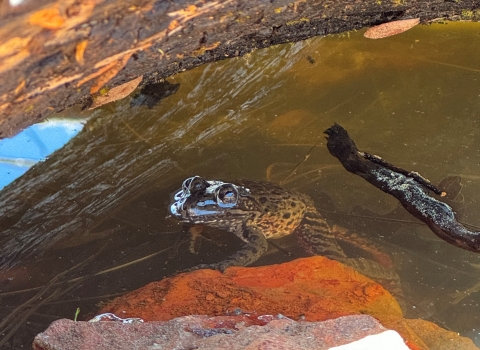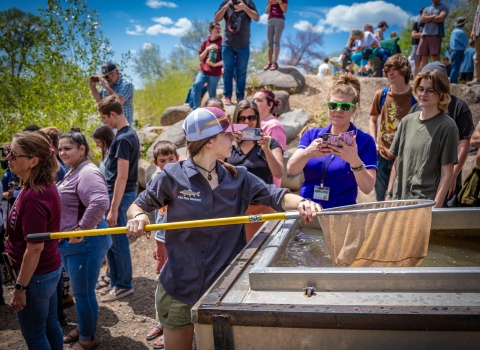U.S. Army Garrison Fort A.P. Hill has been recognized by the U.S. Fish and Wildlife Service for significant conservation achievements on military lands.
This fall the Service awarded the military installation in Virginia the 2022 Northeast Region Military Conservation Partner Award.
“Our military partners are vital to achieving conservation outcomes for rare plants, animals, and habitats in our region,” said Kyla Hastie, Acting Regional Director for the Service’s Northeast Region. “We appreciate Fort A.P. Hill’s dedication to collaborative relationships resulting in successful conservation and stewardship of fish and wildlife resources.”
At a ceremony at the installation, Cindy Schulz, Project Leader for the Service’s Virginia Field Office, presented the award to Director of Public Works, Benjamin McBride.
“Fort A.P. Hill has shown exceptional commitment to natural-resource stewardship on military lands by investing in scientific excellence, innovative programs, and partnerships vital to long-term success,” Schulz said. “We commend you for your leadership and look forward to continued partnership to achieve shared conservation goals.”
Ecological stronghold
Encompassing approximately 76,000 acres, Fort A.P. Hill is one of the most ecologically diverse land areas in the Virginia Coastal Plain, second only to the Great Dismal Swamp. The installation harbors four federally protected species: small whorled pogonia, swamp pink, northern long-eared bat, and Indiana bat. It’s home to the only known Indiana bat maternity colony in Virginia.
In addition to managing and monitoring listed species, Fort A.P. Hill has taken measures to support species that are at risk of population declines, like the Kenk’s amphipod. Proactive work to conserve habitat for this elusive amphipod contributed to the Service’s finding in 2017 that it did not warrant listing under the Endangered Species Act.
The installation’s natural resource program employs a variety of management approaches to support species diversity, including timber harvests, forest thinning, prescribed burns, and delayed mowing of open areas to benefit pollinators and ground-nesting birds.
Fort A.P. Hill was the first in the Army to develop an off-site wetlands mitigation bank, and its Army Compatible Use Buffer (ACUB) program has protected more than 13,500 acres of undeveloped lands surrounding the installation since the program’s inception 15 years ago, contributing to local, state, Tribal, and regional conservation goals.
The installation also helps foster meaningful connections between people and nature through recreational opportunities and programs for the public and veterans, including hunting, fishing, and trapping.
The Service’s work with military partners serves to strategically manage listed species, improve wildlife habitat, restore connectivity of vital waterways, prevent infestations of invasive species invasive species
An invasive species is any plant or animal that has spread or been introduced into a new area where they are, or could, cause harm to the environment, economy, or human, animal, or plant health. Their unwelcome presence can destroy ecosystems and cost millions of dollars.
Learn more about invasive species , and enhance recreational opportunities.
Fort A.P. Hill is a Regional Collective Training Center which provides innovative, flexible, and relevant training enablers in order to support Army, Joint and Inter-agency readiness.
Learn more about the Service's work with military partners.
